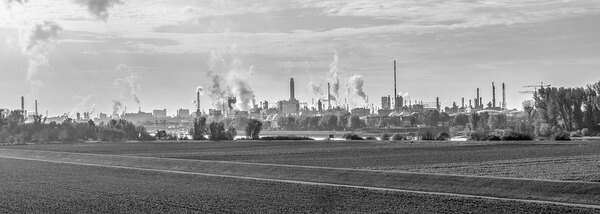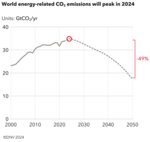News Release from windfair.net
Wind Industry Profile of
Massive Savings: Corona Reduces Emissions
The peak has been reached: As the latest calculations by BloombergNEF show, emissions from fuel combustion peaked last year. After a decline of around 8% in 2020 as a result of the Covid-19 pandemic, energy emissions will rise again in the coming years as the economy recovers, but will never reach the 2019 level again. From 2027 they will decrease at a rate of 0.7% per year until 2050 meaning that another important quantity would be reached after the coal peak.
However, there is still a catch to the calculation so far: the forecast will only become reality if wind and solar energy continue to be massively expanded, the spread of electric vehicles will increase and all branches of industry will develop improved energy efficiency. This will require massive investments worth trillions of euros worldwide by 2050.
Jon Moore, CEO of BNEF comments: “The next ten years will be crucial for the energy transition. There are three key things that we will need to see: accelerated deployment of wind and PV; faster consumer uptake in electric vehicles, small-scale renewables, and low-carbon heating technology, such as heat pumps and scaled-up development and deployment of zero-carbon fuels.”

Less emissions thanks to corona (Image: Pixabay)
But despite the progress of energy transition and the decline in energy demand due to Covid-19, BNEF still sees energy sector emissions heading towards a temperature increase of 3.3 degrees Celsius by 2100. Much too high, as researchers have been warning for years, and much more than was laid down in the Paris Climate Agreement. The consequences would include global famine, extreme weather and, as a result, refugee flows, political unrest and other as yet unforeseeable consequences.
Matthias Kimmel, senior analyst at BNEF and co-author of the report, says: “To stay well below two degrees of global temperature rise, we would need to reduce emissions by 6% every year starting now, and to limit the warming to 1.5 degrees C, emissions would have to fall by 10% per year.”
Faced with such challenges, it is necessary that all nations pull together: After Europe has positioned itself as a pioneer, China has recently followed suit and announced its intention to go carbon neutral. The U.S. is missing, but there is hope, should a new president enter the White House in November: According to Forbes, Democratic presidential candidate Joe Biden has recently declared that he will “cut red-tape to promote faster and easier permitting” to achieve his goal of a carbon-free energy economy by 2035.
Individual federal states are already further along the road: New York has already taken concrete steps to reduce the administrative burden of renewable energy development by creating the nation's first Renewable Energy Site Selection Office, with a mandate to “cut red-tape to promote faster and easier permitting.”
But the complete decarbonization of the US economy is a daunting task. A recent study found that to achieve 90% clean energy by 2035, the United States would need to build about 75 gigawatts of new solar, wind and storage capacity annually over the next 15 years.
A lot of conjunctions, but perhaps the election results in November will provide a little more certainty.
A summary of the BNEF New Energy Outlook 2020 can be found at this link.
- Author:
- Katrin Radtke
- Email:
- press@windfair.net
- Keywords:
- BloombergNEF, outlook, emissions, carbon neutral, China, USA, Europe, peak, oil, coronavirus, Covid 19, wind, solar, investment








